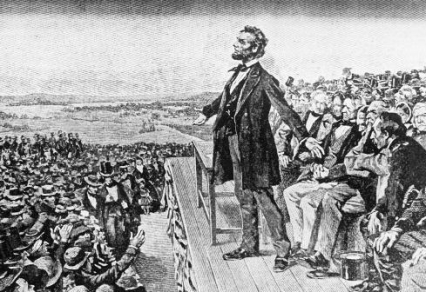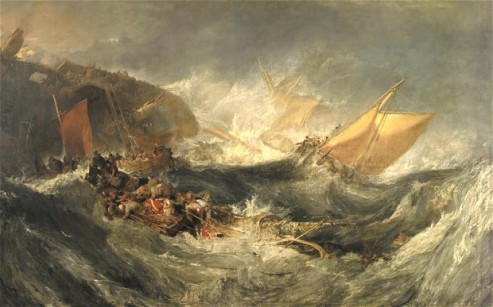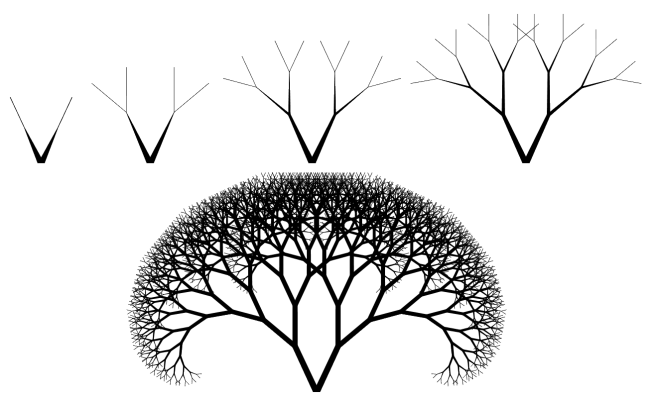
Persons are “free”, but in a complicated sense of that word. Person are not free from their environments, in fact, our freedom must be in coordination with much of our environment. We are not free to do anything we want, nor free to defy natural law; yet, human beings have pretty clearly Progressed in our abilities to do more and have more options about what to do. A Compatiblist Philosophy — one that tries to explain a limited kind of freedom and real progress in the human condition — tries to describe these complex conditions. In our freedom we are a part of this universe, not totally apart from it! How to conceptualize this? In this post, some of our options will be reviewed.
Reflecting on Our Environment
Modern socialized and responsible humans Reflect on their lives at many moments. What we experience in an environment is always at least subtly different from the past. We, ourselves, are at least subtly different at each new time. When we contemplate and then act, it is true that configurations in the form of chemical reactions and sub-atomic fluctuations are occurring in ‘our’ brains and in the world that includes ‘us’ that are associated with our decisions as persons to act and those actions themselves. Yet, we still say, “I am responsible for what I did”, and that is from the point of view of persons. In other situations, we say “I am NOT responsible for that and it was something that happened to me” and we are still speaking as persons in making that assessment and recognizing that freedom and responsibility has its limits in various ways in various situations.

A very personal example involving a dear and subtle situation: My mother and father had a very tumultuous relationship. One night after a very bad and prolonged argument, my mother was in the back yard crying and I was trying to comfort her. I was 12 and the oldest of 5 (!), and she asked me if she should divorce my father. At that point, I felt a tremendous pressure come down upon me. Sadly, what dominated my thoughts was my Catholic education and the stigma of divorce — in any religion — in the early 1960’s. I told her “No, you shouldn’t do that.” Not long after that, as the arguments and even physical and emotional abuse continued, I felt very guilty about what I had said that night. It was only in my early 30’s that I sought counselling to discuss that very night. With help, I realized that I was Not Responsible for what I said that night. My mother’s question was an unfair situation to place a 12 year old. I also came to realize that my father, for whom I held much anger, was a complex man for whom there was significant good and that he was, after all, just a fallible person, himself. I seriously reflected and realigned some significant emotions and thoughts in those counselling sessions. I left a lot a guilt there. That is the power of Reflection and Personhood. I felt and acted, in some sense, very differently from that point on.
Images of an Overwhelming Unity
Yet — strangely, why would you even want to take this perspective of such an event? — from the point of view of chemistry or physics or other hard determinist positions, it seems we have several options for how to think about that epiphany. How can we think about the relation of these ‘underlying’ realities —- the chemical reactions in my brain, my history of socialization… —- to the moment of this very personal and emotional realization?
1) ‘It’ was always going to happen. Wanting to preserve the unity of a Scientific Reductionist View, we could argue that the universe was and is aligned so that the collection of particles taken to be ‘me’ was always going to be ‘sitting’ on that ‘chair’ and in that ‘counselling office’ and ‘speaking’ and ‘thinking’ and ‘feeling better’. Of course, none of those scare-quoted words are in the vocabularies of physics or chemistry, the disciplines that form the backbone of the hard determinist contention. For them, it should be particles or quantum waves or chemical reactions all the way through. Which then raises the question, ‘In what sense are we talking about “the same” event?’ The event I recounted was very personal and emotional; the event described by these sciences is very impersonal and objective. How are they the same event? How does the one kind cause the other? Isn’t the flow of endorphins in my brain “causing” a cessation of guilt and a realignment of my emotional life a little like water becoming wine? (See, “The Secretly Profound Idea of Emergence” in post series, Emergence and the Work of Sean Carroll)
(Illustration of an actual Human Heart and photo of an artificial Human Heart. Are they the same thing? Both do The Same Job: Isn’t that what is most important? Are they”The Same” , basically? Photo from howthingswork.)
An interesting feature of this view, emphasized by physicist Sean Carroll, is that, for physics, Time is reversible. With the right laws of physics — The Core Theory, we can go from any momentary state of the universe and understand it back to the origin of the universe or forward to the final states of the universe. Physics discovers a necessary sequence of events.
Yet, the event I recounted seems to have a unique climactic kind of character. This seems essential to it! When we think of our personal history, and even world history, we don’t tend to see it as locked-in, past and future, in that kind of way. We seem to be surprised by its new developments; new qualities and abilities appear. Carroll even expresses wonder at the progression of the macroscopic qualities of water from vapor to liquid to ice! To him, there are surprising new qualities there.
2) Regardless of “always going to happen”, shortly before it did happen — even if only by milliseconds — a brain monitor (of a hypothetical brain “reading” machine) could have picked up the neural activity and recorded what I was going to say and feel before I said it or was even aware that I was going to say it or feel it. This is an argument advanced by the neuroscientist and hard determinist, Sam Harris. Our ideas ‘bubble up’ from deep in our mind where forces beyond our control and awareness are at work. They are caused by these ‘deeper levels’ of physical occurrences.
But, this too suffers from the earlier objection: A Spanish speaker and an English speaker would not emit the same color words (the same sounds!) when similar color associated parts of their brain were stimulated. They would emit the sounds consistent with the order of the language they spoke. “Language” is itself an autonomous structure different from the neural interconnections of brains, which are an entirely different level of structure with there own patterns. Each language is then itself a self-contained ‘thing’ within that broader category of “language structure”. Neural activity does not cause me to say “red”; neural activity and socialization into the English language do, then, form a consistent association of phenomena on two different levels.

Or, a different variation: A Super Psychologist and Almost-Like Novelist could recreate the events of my life from my memories and her research, and plot the ‘scenes’ as they “led to” or “resulted in” all the subsequent decisions and feeling, including my epiphany in that psychologist’s very office. It would be like the movie, It’s a Wonderful Life, except instead of God revealing to Clarence, “the angel second class”, the circumstances of George Bailey’s life. My Super Psychologist would have those abilities in a more naturalistic form and reveal those inner causes, or themes, of my wonderful life to me. I was caused by my upbringing and its necessary progression of events to come to that epiphany.
For hard determinists, there are many different causal chains that can be extended from our environment to ‘us’, described in many different forms. But, we also have less restrictive ways of thinking about our actions.
Images of Participation in Unity
3) The Strong Emergentist Position: My thoughts and reflections are “in control”. Through the conversation with the counselor, new Ideas changed neural patterns and chemical reactions. They shaped the physical world. As Carroll says, “they swerve atoms.” A person is free from and controls its environment, including the waves in their brain, at least often. This position does often seem true, and it is acknowledged by many writers on this topic to be the way people ordinarily think of persons: We often control ourselves and our environment through our thoughts and decisions.

(The Whole is Greater than the Sum of Its Parts. The Portuguese Man-of-War is “actually” composed of 3-4 different organisms that always live and work together; they are One, each functions differently and needs the others. The “sail” is one, and it rises about 6” above the water and is about 1′ long. The tentacles are of several types and can stretch as long as 90′ ! see post The Human Social Organism.)
There is also an additional take on Strong Emergence. The emphasis here is on an important Structural Character of some emergent objects: They come together in a way that allows
The Whole can be More Than the Sum of The Parts.
Some Strong Emergentists — like the famous mathematician and Idealist Philosopher, Alfred North Whitehead — see this feature as the basis for the priority of patterns and structures over the materials that instantiate them, a kind of Transcendental Mind over Matter Metaphysical position; but there are other interpretations as we will see below.
Participation Through Enhanced Environments

The Harvesters by Pieter Bruegel the Elder (1565), oil on wood, image from THE MET
4) The Weak Emergentist Position is hardest to explain. It tries to split the difference between one and two, taken together, and three, Strong Emerge. Weak Emerge does Not want to allow “higher Level” or “more Complex objects” to alter the course of atoms (lower level events). Yet, it wants persons to be free, and moral responsibility to play Some Significant Role in contributing to behavior.
For weak emergence, it is a false dichotomy: freedom vs the environment. A more balanced assessment includes freedom through our environment. One of the great insights of Compatibilist thinking is the latter’s assessment of “the environment”: it is a place where creatures, and evolution, have ‘downloaded’ massive amounts of ‘knowledge’. It is the way ‘the environment’ (as the stripped-down and universal environment of physics) can also become ‘our environment’ (as the qualitatively rich and complex home for living things and persons).
(“The” Environment and “Our” Environment. Do Flowers and Butterflies have an autonomy and dignity beyond the molecules that compose them? A theory of the logical interrelationship of each level of Reality contends they do. Images from thoughtcom and GWW)
On the other hand, I also argued that “Freedom” can not exist in many kinds of environments, and of this we are quite well aware. If you are in a prison camp, you are not free in many significant ways. You are physically constrained. If you are falling down an elevator shaft, you have few real options. These are not very ‘personal’ environments and in the latter you are little more that a pool ball destined for the spot it will land due to the forces beyond it. It seems that hard determinists equate all our environments with that elevator shaft: forces beyond ‘us’, and running right through ‘us’, determine our outcomes no matter the environment. Freedom must be — free from the environment, they say.

How to evade this conclusion, if only by a limitation of it? First of all, the “no matter the environment” contention will not fly. We, humans, we, persons, place great significance on setting up just the right kind of environments we want. We strive to send our children to the right school. We want to live in a nice neighborhood. We want a good work environment. We want our house to be comfortable and reflect our personality. We strive for a healthy body (well, kinda!). Why?
So that our environment influences us, even causes us, in a manner we want.
In that sense, we understand that our environment IS us and we are good with that. No object acts independently of its environment, but there is a hierarchy of environments that is vital to understanding the greater abilities of persons, in contrast to the ability of pool balls.

In these enhanced environments, we extend our “self” out beyond our bodily organs and into the world around us. I understand, and am comfortable with seeing, “my” kidneys as part of “me”, and functioning for “my” benefit (if healthy). But a hammer is also very

beneficial to me and I know it almost as intimately: I reflexively hold it by its handle and use it for the purpose of pounding. And the modern biological sciences knows that a beaver’s dam and the pond it creates, and a bee’s hive, and a human’s home and its city are natural extensions of these creatures. They function as externalized organs of these individuals and/or societies. Dennett, among others, has aided in this understanding of ourselves “made large” and stretching out to form not just “the” environment, but “our” environment.

As parts of ‘our’ environment, our relation to these ‘externalized organs’ can be causal or, from our point of view as persons, INFORMATIONAL. When a spider senses activity in its web and responds, we can think of it either way. It is being caused to respond or it is responding to information. The fact that the spider will respond every time and in the same way will then tend to lead us to conclude its behavior is “instinctive”, “built in” and “genetic”. The famous biologist, Niko Tinbergen, discovered the shockingly repetitive, but also rather complex, nesting behavior of the “digger” wasp (sphex). This animal is stuck, from our point of view. It can be easily and obviously tricked, only to restart its routine anew time and again. It is clearly unable to alter its behavior even though additional information seems clearly available to it. We would expect a person to reflect on what we would recognize as new INFORMATION and alter their behavior. The wasp is unable to do this. It is stuck in its design.
(The ‘Digger’ Wasp has highly ritualized nesting behavior. Baseball is also highly ritualized, BUT baseball players Learn from their experience; the wasp does not. This runner is being called “OUT!” and NEXT TIME — in much the same situation — he may Not try for second base. PERSONS evaluate the outcomes of their behavior and may change their routine.)
Persons are self-controllers. Persons try to recognize the opportunities and the limitations to what they can do. Persons, as scientist, also try to understand the world objectively as a place where things like “persons” do not exist. The Scientific Image of the world that scientists have created, has achieved much success.
But so has our personal point of view. Dennett calls this more subjective view The Manifest Image of the world. It is the level of vocabulary, behavior and reality, in which humans are socialized and become persons who are then trained to act with freedom and responsibility according to the standards of various professions, such as scientist, doctor, teacher, artist, carpenter, mayor…, and various roles, such as mother, father, child, student, employee, employer, … Society tends to hold us to these standards, and we tend to hold ourselves to them.
In these roles, and as persons, we act according to “the Idea of Freedom” contends Dennett, following Immanuel Kant. And this, in spite of the fact, The Scientific Image suggests otherwise. The Manifest Image is the ladder we use to climb to, and maintain, the free and responsible actions of scientists and others. To think that once glimpsing The World as seen by Science, we can then kick away the ladder we used to get there and declare the world void of persons and freedom, this is a reductio ad absurdum.*
We need to fulfill the promise of the world of persons, not throw it overboard for some vaguely perceived and not actually lived alternative of Total Science.

Stay tuned for Freedom 3 in this series! It’s ready for publication. It’s the hardest in the series — anticipated length of 4 posts. In it I will describe The Relationship Between Things that is more important than causation: Reference, Intention; “it’s MEANING, baby, meaning!”
*That most famous and enigmatic modern philosopher, Ludwig Wittgenstein used the ‘climbing the ladder and then kicking it away’ analogy but not as a reductio, I believe.









As I could not leave a comment on Pt.1, I will keep this short. Our environment and control of it is as people is so important. In my opinion our very survival depends on the controls we have to limit the destruction of our planet. My hope is that enough people take this seriously enough and act to do something about it.
LikeLike
John, thanks for following so diligently.
To me, many things seem very out of control. Trump, the climate and now this new disease in China. I end one of my posts eluding to “the promise of personhood”, us people need to further, much much further, Get Our Sh*# To&e#her!!!! Respect for each other and our planet needs to be Priority 1 !!!
On a lighter note, is the new organization here at The Connection helpful? Where you able to find these new posts? I will look into the issue of not being able to comment after Freedom 1. Thanks, Greg
LikeLike